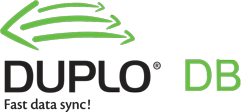Which are the minimum requirements for the installation of Duplo?
See the dedicated section: Minimum requirements
Is it possible to change in any moment the configuration settings?
Yes, through the options available in the context menu of the Duplo Console, activated by the right mouse button, you can change the configuration parameters.
In which operating system can Duplo be installed?
DuploDB® is a software written in Java, so it can be installed on any operating system that supports this technology. The Duplo Console, a tool that allows you to configure and monitor the status of DuploDB®, however, can only be installed on Windows.
How many systems / tables can be synchronized with Duplo?
The number of systems and tables synchronized with DuploDB®, varies depending on the license purchased.
How do I register a new system?
You can record a new system by right-clicking the mouse on the "System" voice, then select "New System".
Are the Duplo Journal Reader and the AS/400 Journal Reader the same thing?
No, to the AS/400 Journal Reader is an own process of the operating system, which captures changes, while the DuploDB® Journal Reader is the element that processes the changes captured by the trigger or, indeed, by the Journal Reader, in the case of AS/400.
Is it possible to use the Journal Reader on AS/400?
If you want to use the capture mode of changes by Journal Reader, you must perform an additional configuration step. DuploDB® has the possibility to synchronize in AS/400 differents environments. The system's name is a three-byte ID that identifies the environment that you want to synchronize which appears in the first three bytes of the job's name. The last three bytes of the job's name identifies instance operative Journal Reader. Within an environment, you can submit more Journal Readers. In the typical configuration, the AS / 400 is seen as the only synchronization environment, where we can just have a Journal Reader for journal operative.
Does DuploDB® work on Linux?
DuploDB® runs in background, taking control of the console. If closed, the DuploDB® process would be terminated. It's therefore necessary to make sure that DuploDB® is run as a "daemon", in other words a background process related to corrent execution's runlevel. DuploDB®, therefore, depends on the operating system, is started when you start the system, and is stopped when the machine is turned off or rebooted.

